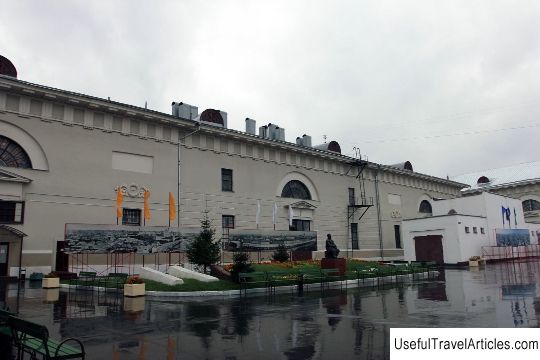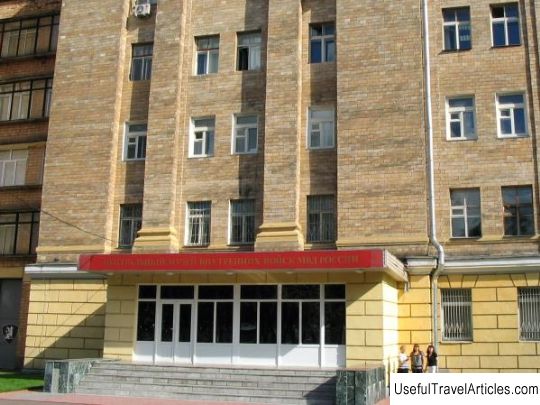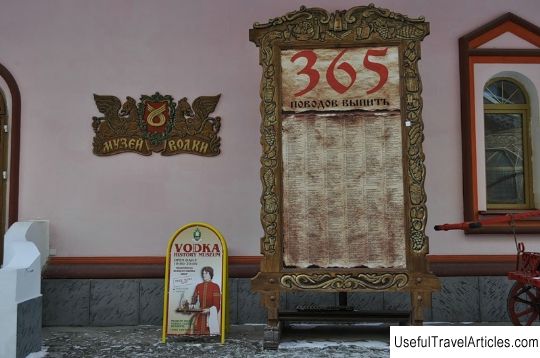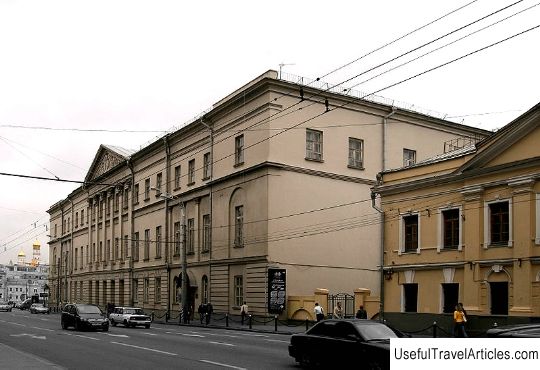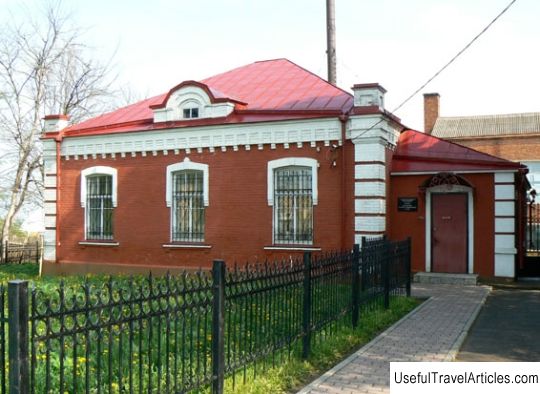Historical Museum description and photos - Russia - Moscow: Moscow
Rating: 7,7/10 (301 votes) 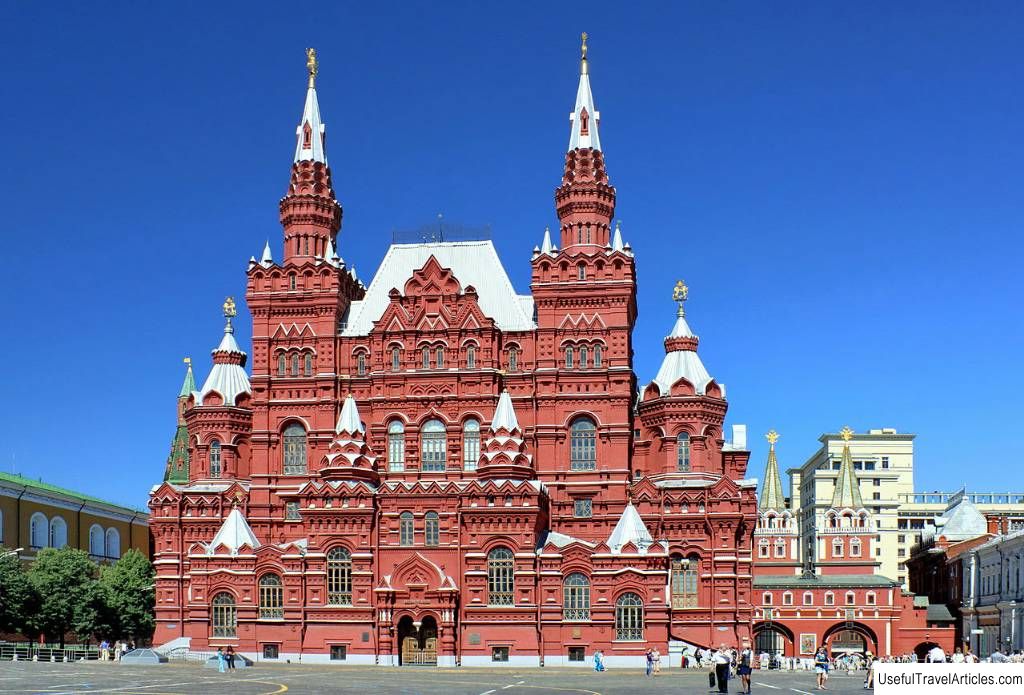
Historical Museum description and photos - Russia - Moscow: Moscow. Detailed information about the attraction. Description, photos and a map showing the nearest significant objects. Photo and descriptionThe largest national historical museum of the Russian Federation is located on Red Square in Moscow . The main building of the State Historical Museum, built of red brick using traditional elements of Russian architecture, is included in the UNESCO World Heritage List. The museum has more than five million exhibits and 14 million documents . At least 1.2 million visitors come to the State Historical Museum annually. History of the Historical MuseumThe Russian intelligentsia spoke of the need to create a museum back in the middle of the 19th century. Scientists and nobles understood that one should not only preserve valuable historical relics, but also constantly replenish the collection through archaeological and ethnographic expeditions. The final decision came after the industrial exhibition celebrating the 200th anniversary of Emperor Peter I. In order to preserve the items displayed at the industrial exhibition and provide the public with access to them at any time, premises and personnel were required. At the beginning of 1872, Tsarevich Alexander received a note with a corresponding idea. He received written permission from Emperor Alexander II, and the work began to boil. A committee of scientists led by Count Uvarov developed the concept of the future museum . It was supposed to "serve as a visual history of the main eras of the Russian state." In May 1883, the opening took place, the museum was visited by the imperial family and, despite the imperfections, the exposition was opened to the public. After the revolution, the State Historical Museum was threatened with disbandment, because the victorious new government did not understand the value of the exhibits and demanded to arrange "a factory in the house." The Museum was saved by the decrees of Lenin and Lunacharsky, and later its collection was significantly replenished with the values expropriated from the nobles and landowners . During the Great Patriotic War, some of the most important exhibits were evacuated, and the rest remained in besieged Moscow. The doors of the museum were opened for visitors even in the most terrible days of siege and bombing , and new exhibitions were dedicated to the heroic deed of the Soviet people. The post-war and perestroika times became a difficult test for the old building. But after the signing of a presidential decree granting the State Historical Museum the status of a particularly valuable object of the country's cultural heritage, restoration and repair work began in it. In the spring of 2007, the State Historical Museum, for the first time in history, opened the doors of all forty halls. Building on Red Square After signing Emperor decree on the creation of the museum, it was decided to open it in the very heart of Moscow. For the construction of the mansion, the historic building of the stone town hall was demolished, built in 1700 by order of Peter I. The authors of the project of the museum building were Vladimir Sherwood , a graduate of a painting school and landscape painter, and Anatoly Semeno in, who, among other architects, built the building of the Polytechnic Exhibition of 1872. Drawings of facades, layout of windows, design options for exhibition halls and exterior decoration have changed several times. The engineering conditions for the construction of the building were very difficult and the construction was stopped more than once as a result of lack of funding. The idea of the architectural project, called "Fatherland", was the continuity of the traditions of ancient Russian architecture and rethinking the appearance of the main square of Moscow . From a semblance of a Roman forum, Red Square was supposed to become a symbol of the Russian people and unity. As a result, the authors of the project managed to create an example of the pseudo-Russian style, which was popular in the late 19th century in Russia. The facades of the museum are decorated using elements traditional for Russian architecture - kokoshniks and arches, icon cases and weights, drawn cornices and arcature belts. The facade of the State Historical Museum compositionally balances St. Basil's Cathedral on the opposite side of Red Square, making its architectural solution particularly harmonious. The interior of the museum is decorated with expensive and especially valuable materials - Carrara marble, oak, gilding . The covers of several hundred museum windows are made in a unique ancient Russian technique and are called mica. Mosaic floors in the halls were laid by masters of the capital's artels, and the ceilings and walls were painted by artists, among whom were Vasnetsov, Repin, Aivazovsky and Serov. The Golden Fund of the Historical Museum
- The Radziwill Chronicle was created on the basis of the Pereyaslavl Suzdal vault at the beginning of the XIII century. Her miniatures are often called portals to the old world. The chronicler tells about the life of people, about the successes of the ancient state in military affairs, about the most important events that happened in the course of its history. - An unconditional masterpiece of applied art and a priceless relic - an embroidered icon of the Fedorovskaya Mother of God , which the mother of Tsar Mikhail Fedorovich presented to the Ipatiev Monastery. Old woman Martha personally embroidered the image and her gift was considered a great contribution to the monastery, where in 1613 the embassy of the Zemsky Cathedral summoned Mikhail Romanov to the kingdom. The solemn ceremony put an end to the Time of Troubles. - The Horn Orchestra of Catherine II is a collection of musical instruments made from horns. Usually they were used by hunters, but in the era of Catherine II the music of horn orchestras became a special fashion. The most famous performance of the horn players happened on the occasion of the capture of Ishmael, when three hundred musicians took part in a concert at the Tauride Palace. Personal belongings and objects belonging to historical celebrities invariably attract the attention of museum visitors: - Order of St. George , which was awarded to the great Russian commander A V. Suvorov. Evidence of the brilliant victory on September 11, 1789 on the Rymnik river during the Russian-Turkish war, the order was granted to Suvorov by Catherine II along with the title of count. - The carriage of Peter I served the emperor during his long journeys. The copy exhibited at the State Historical Museum, according to historians, became a vehicle for the tsar in a special case: Peter rode a cart with ice windows to Arkhangelsk, where he studied ship craft. - In the Museum of the Patriotic War of 1812, which is part of composition of the State Historical Museum, personal saber of Napoleon Bonaparte is kept. The French emperor gave it to Alexander I's adjutant, Count Shuvalov, when he accompanied Bonaparte on a ferry to the Elbe. Shuvalov defended Napoleon from an angry crowd, which earned him the gratitude of the deposed emperor. - Fan of A. Pushkin's wife , on the contrary, the exhibit is very peaceful and beautiful. Natalia Goncharova, known as a fashionable and stylish lady, ordered her fan from the best master. Sixteen turtle shell plates are decorated with small silver crowns. - Emperor Alexander II named by his descendants as a reformer is known primarily for the abolition of serfdom in Russia. The State Historical Museum contains his pen, with which the tsar signed decrees and orders. - A masterpiece of painting that adorns the State Historical Museum canopy is the genealogical tree of the imperial family . The composition consists of 68 full-length portraits of emperors and kings. The tree starts from Princess Olga and Prince Vladimir. Branches and expositions The Association of the State Historical Museum includes several museum objects and branches: - The building of the Historical Museum on Red Square, whose exposition covers a huge time period - from the era Neolithic until the beginning of the twentieth century. - St. Basil's Cathedral on Red Square is called one of the most significant surviving monuments of Russian architecture. It was built in the middle of the 16th century and consecrated in the name of the Protection of the Most Holy Theotokos. In the cathedral, you can get acquainted with the collection of Old Russian icon painting and see wall paintings. - Museum of the Patriotic War of 1812 first opened in the halls of the State Historical Museum in 1912. His collection is called a symbol of patriotism and pure glory of the Russian army. - The chambers of the Romanov boyars represent the patriarchal way of life of the Moscow boyars and their way of life. The exposition covers the period of the XVI-XVII centuries and demonstrates the reconstructed residential and utility interiors with authentic household items. - Novodevichy Convent on Bolshaya Pirogovskaya Street, founded in the first third of the XVI century in honor of Smolenskaya the icon of the Mother of God "Odigitria" and included in the UNESCO lists of the heritage of all mankind is an example of Moscow baroque. The monastery is jointly run by the State Historical Museum and the Russian Orthodox Church. The State Historical Museum's collection continues to grow. Archaeological expeditions conducting research on the territory of the Russian Federation are discovering ever new historical relics and artifacts. The museum funds annually receive at least 15 thousand items that take their places on the exhibition stands. Note:
         We also recommend reading Perynsky skete description and photos - Russia - North-West: Veliky Novgorod Topic: Historical Museum description and photos - Russia - Moscow: Moscow. |
